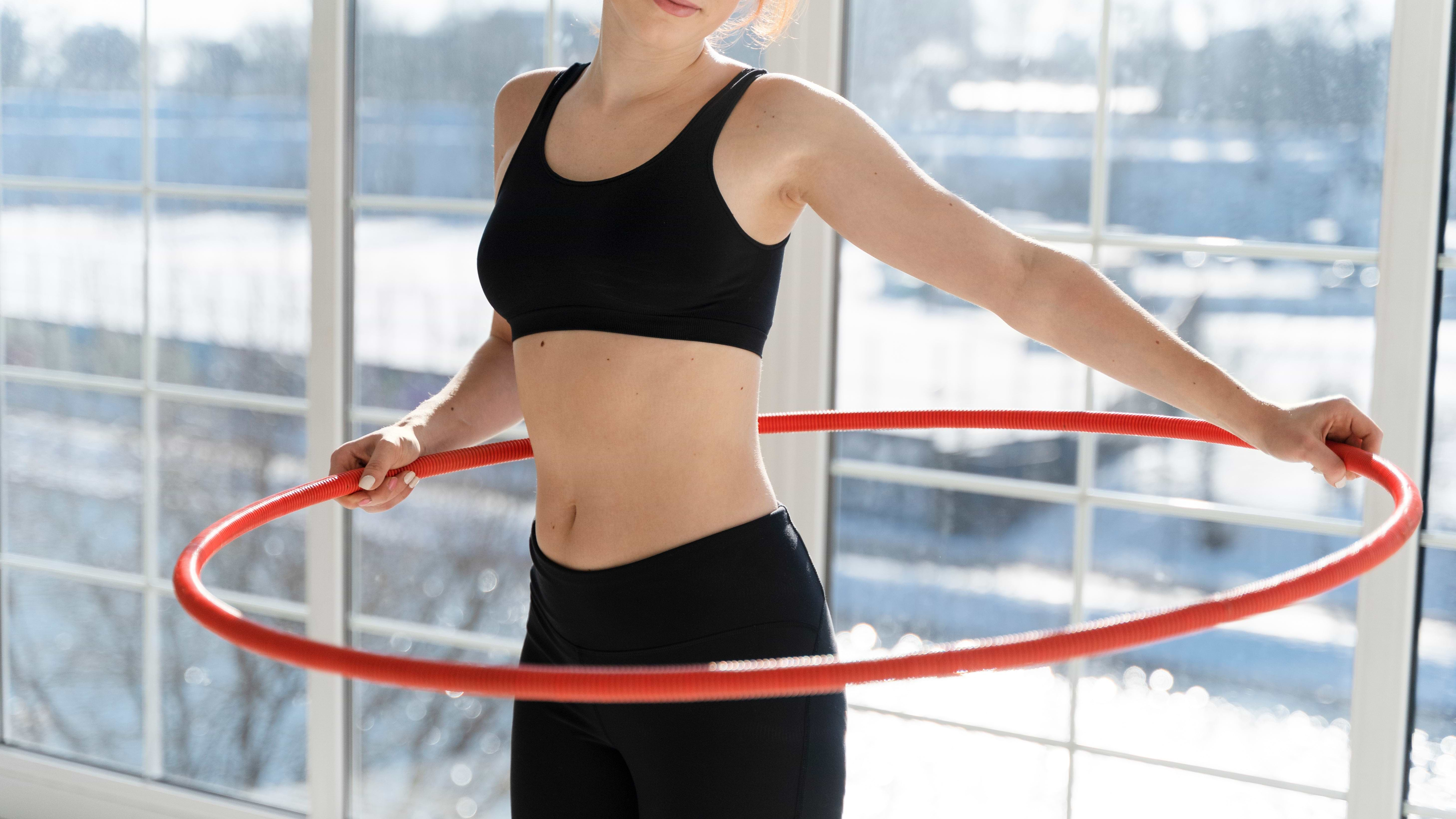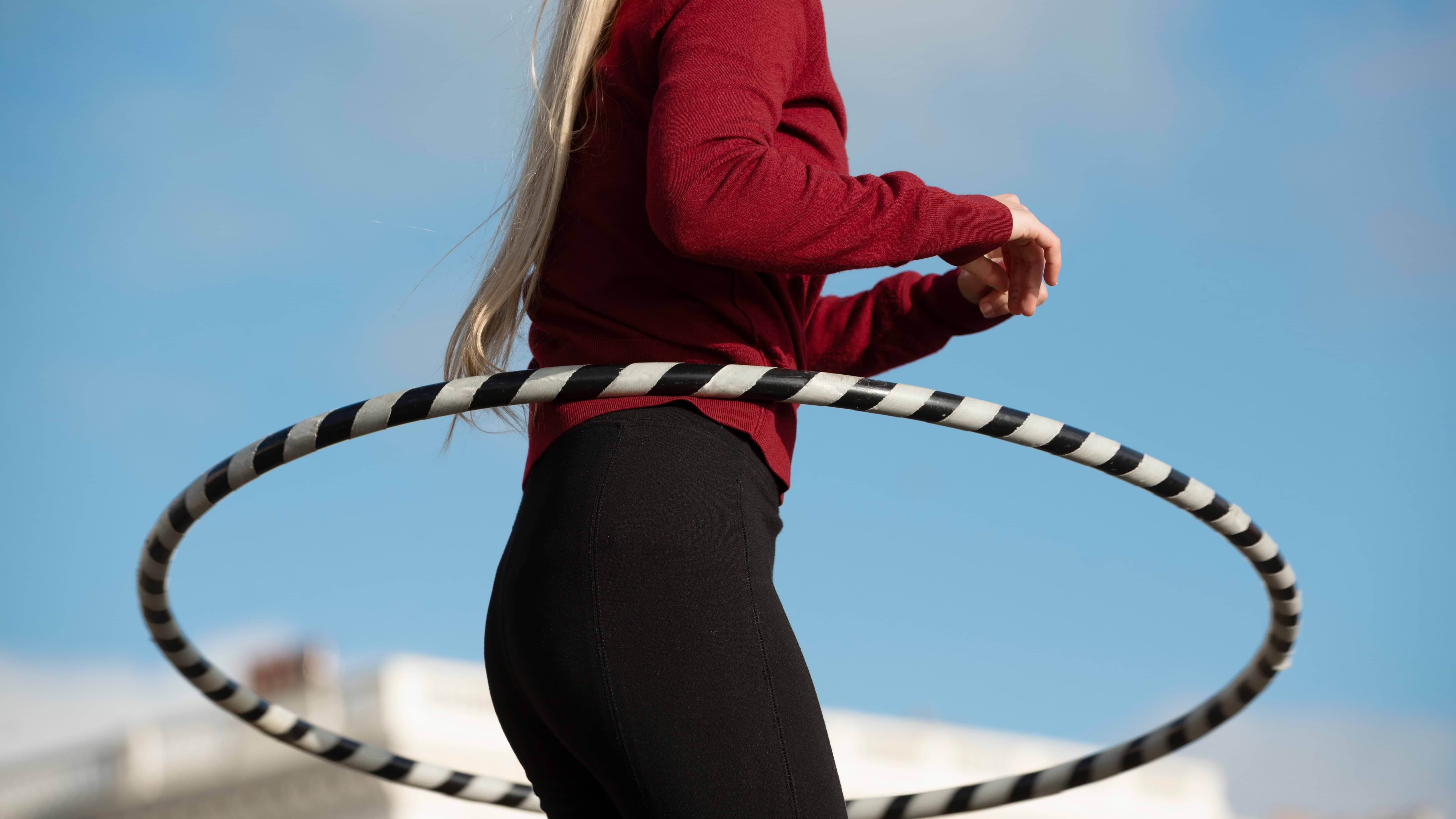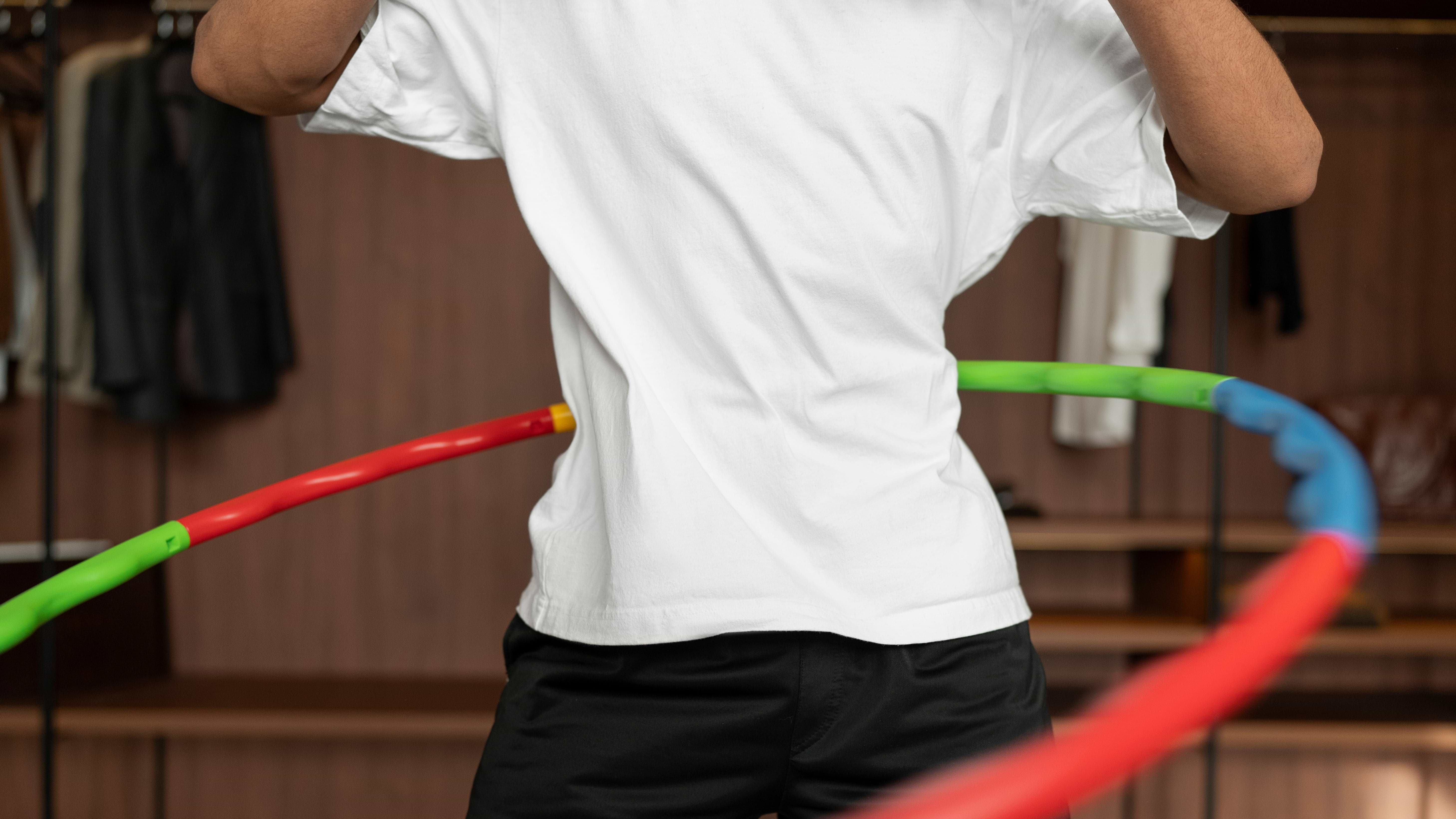Hula hooping – for many, a nostalgic childhood memory, for others, a trendy fitness trend. On social media, influencers celebrate the colorful hoop as a miracle cure for a slim waist and a toned stomach. But how effective is hula hooping really? And does it fit into a structured fitness program?
In this article, we take a closer look at hula hoop training. We'll show you who it's suitable for, what benefits it can achieve, and how you can effectively combine the workout with other training methods and equipment from Atletica.

1. What is a hula hoop and how does it work?
A hula hoop is a hoop, usually made of plastic, that is swung around the waist. Smooth hip movements keep the hoop rotating, continuously engaging the abdominal, back, and core muscles.
Modern fitness hoops differ significantly from classic children's hoops. They are larger, heavier, and sometimes equipped with knobs or weights to increase the training effect. Some models feature mass elements designed to further stimulate the metabolism.
The heavier the hoop, the easier it is to circle. However, the training effect is greater with lighter hoops, as the body has more to compensate for. Beginners are best advised to start with a hoop between 1 and 1.5 kg.
2. Which muscle groups are trained?
Training with the hula hoop primarily targets the following muscle groups:
- Abdominal muscles : The oblique abdominal muscles in particular are activated during the circular movement.
- Back muscles : The lower back in particular benefits from the stabilizing movement.
- Hips & Buttocks : The rhythmic movements also work the gluteal muscles.
- Pelvic floor : Dynamic holding can address the deep muscles.
- Thighs : The quadriceps can also benefit from targeted exercises while standing.
With a little practice, hula hooping can become part of a holistic core workout. Advanced users can combine it with additional movements like squats or arm exercises.
3. What are the benefits of the hula hoop workout?
- Calorie consumption : Depending on the intensity and duration, you can burn up to 200-400 calories in 30 minutes.
- Coordination & Balance : The constant circling trains body awareness and balance.
- Gentle on the joints : Ideal for beginners or people with knee problems.
- Motivation : The fun factor is high, which increases training consistency.
- Improved blood circulation : Training stimulates metabolism and lymphatic circulation.
- Compact training : It takes up hardly any space – ideal for the living room or small training rooms.

In addition, regular exercise can lead to a visible improvement in the waist and stomach shape. Many also report firmer skin and a better body image.
4. Are there any disadvantages or risks?
As effective and fun as hula hooping can be, there are limitations:
- Bruises: Bruises can occur especially at the beginning, especially with knobbly tires.
- Skin irritation : Especially during intensive sessions or on sensitive skin.
- Limited variety : The range of motion is limited and does not replace full strength training.
- No miracle cure : Without additional training stimuli and a balanced diet, hula hooping alone will hardly burn fat.
Tip : Those who integrate Hula Hoop into a holistic training plan will benefit the most.
5. Who is hula hoop training suitable for?
Hula Hoop is basically suitable for almost all age groups, especially:
- Fitness beginners
- People with little time for sports
- Back or pelvic floor problems (after consultation with specialists)
- Women after pregnancy (after approval by doctor )
- Young people who enjoy active fitness
Important : If you have any existing problems in your torso or abdominal area, you should seek medical advice beforehand. Training may also be counterproductive if you have spinal problems or severe skin irritation.
6. How to integrate hula hoop into your training plan
A hula hoop workout is ideal as a complement to strength and endurance training. Examples:
- Warm-up: 5–10 minutes of tire circling to activate the core
- Core workout: Combined with planks, sit-ups and Russian twists
- Cardio session: Interval training with jumping jacks, burpees and hula hoop
- Cool-down: Light tire circling for relaxation and relaxation
Training plan example:
|
weekday |
training session |
|
Monday |
10 min hula hoop + leg workout with dumbbells |
|
Wednesday |
15 min interval with tires + 15 min indoor bike |
|
Friday |
10 min core + hula hoop + stretching |
7. Hula Hoop & Atletica: The perfect complement
Even though Atletica does not have its own hula hoops in its range, their equipment can be perfectly combined with the hoop workout:
- Dumbbells : Ideal for strength intervals between hoop sets
- Kettlebells : For functional training and core strengthening
- Indoor Bike : Supplement for the cardiovascular system
- Abdominal trainer : For targeted abdominal muscles after hula hooping
- Resistance bands : For strengthening arms and legs
A varied training plan with different tools prevents one-sidedness and increases effectiveness.

8. Tips for getting started
- Tire selection : Beginners should start with a tire between 1.2 and 1.5 kg.
- Clothing : Tight-fitting clothing prevents friction and bruising.
- Surface : A non-slip mat or carpet is particularly suitable.
- Duration : Start with 5 minutes per day and slowly increase to 20-30 minutes.
- Regularity : It is better to do 10 minutes a day than 45 minutes once a week.
Conclusion: Toy or serious training?
The hula hoop is much more than a retro toy. When used correctly, it offers an effective addition to your core and cardio training. While it's no substitute for targeted muscle training, it does add variety, fun, and motivation to your daily routine.
Combined with targeted strength and endurance training—for example, with equipment from Atletica —hula hooping can be a valuable component of your fitness routine. Especially for beginners or those with limited time, the hoop is a motivating training tool with noticeable benefits.




































































































